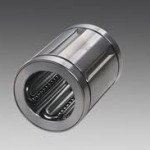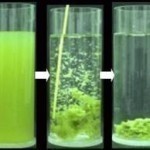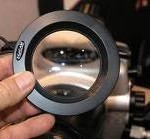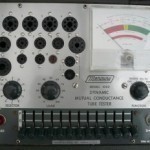A quantum dot is a semiconductor that exhibits tremendous capability despite the fact that they are so tiny: 2-10 nanometers. Because materials behave much differently when they are at this size, researchers hope that they will be able to make tremendous steps in many different applications of science and technology. Because of the size of them, the quantum dots provide the researcher with the ability to tune the dots to levels that have never been reached before. To describe it in a much more straight forward manner, a quantum dot Read More
What Are Bucky Balls Used For?
A bucky ball is a fullerene molecule which is any molecule that is made up entirely of carbon. Specifically, a bucky ball is a spherical fullerene while the cylindrical fullerene is called a carbon nanotube. They were discovered in 1985 and are referred to, chemically, as C60. When they were discovered, it expanded the number of carbon allotropes–the way the atoms are aligned–which had, before this, been diamond, graphite and soot/charcoal. Now fullerene molecules adds another allotrope to the mix. Because scientists are still working hard on determining what bucky Read More
How Fiber Optic Lights Work
Fiber optic lines, which can be as thin as a piece of human hair, are made of strands of glass that are optically pure. They are used to transmit light signals, and have the ability to carry these signals over long distances. How is Light Transmitted Through Fiber Optics? The process by which light is transmitted through fiber optics can best be described through the use of an analogy. If you want to shine a light through a tunnel, you can do so by pointing a flashlight down the tunnel Read More
What Causes Left Handedness?
Left handedness is a person's preference in using the left hand over the right hand which, when considering the number of people, is relatively rare. It is believed that anywhere from seven to ten percent of the adult population is left handed. The rest are predominately right handed. The fundamental problem when discussing left handedness is determining the cause. Scientists have many theories with a lot of research to back it up, but different theories all have that research. Therefore, there is no single cause of left handedness, but there Read More
What Are Linear Bearings?

Linear bearings are a type of free motion enabling assemblage that operates in a single dimension. They are used in a wide variety of applications. Most linear bearings need to use a precision shafting and a lubrication system to run efficiently. There are both motorized and non-motorized versions of the linear bearings. There are two main sub-categories of linear bearings: Rolling Element Slide – Rolling element linear bearings are designed with rolling elements to aid in sliding movement. The movement is achieved with a lower friction that the rolling elements, Read More
What is Flocculation?

Flocculation is when microscopic particles bind together to form larger particles in liquids. It occurs naturally or artificially in water as well as other solutions. Flocculation is used in applications such as water purification, sewage treatment, cheese production, and brewing. It is also used in surface and physical chemistry, biology, and civil engineering. The term “flocculation” generally refers to an actual effect while the term “flocculant” describes a chemical or substance that promotes flocculation and usually has a positive charge. How Flocculation Works Flocculation occurs when small particles in a Read More
What is a Diopter?

A diopter is a lens that bends light in order to magnify an object. Diopters can be used to enlarge small objects or see across far distances and are generally integrated into other objects in order to maximize efficiency and accessibility. A diopter can also refer to a measurement that describes a lens’s optical power and measures the maximum distance that a lens is capable of viewing an object from. How Diopters Work A diopter (lens) is a transparent piece of glass or plastic that bends light inward or outward Read More
What is Transconductance?

Transconductance is a property of some electronic components and is also known as mutual conductance. It is the opposite of resistance. The measure of transconductance is the ratio of the electrical current change at an output port as compared to the voltage change at the input port. The measure of transconductance is commonly used in reference to vacuum tube ratings as well as other electronic devices. Devices With Measurable Transconductance Vacuum tubes, bipolar transistors, field effect transistors, and amplifiers typically have a measurable transconductance value. In vacuum tubes, it is Read More
What Does WD 40 Stand For?
WD 40 is a clever name for a waterproofing solution. WD-40 literally means “Water Displacement 40th attempt.” It contains hydrocarbons which propel the oils to prevent the wetness of water from reaching the coated surfaces. It has numerous uses as a household tool and is currently available worldwide. The hydrocarbons were then replaced with carbon dioxides as a safety measure later on. The company has been in business ever since 1958 when WD 40 was invented. It was originally designed to coat the SM-65 Atlas Missile to prevent rusting and Read More
The Richter Scale
When earthquake generate seismic waves that travel through the Earth’s crust, they can be recorded on seismographs. When a seismograph records these waves, a trace that shows the amplitude of the wave measurements is generated and converted to the Richter Scale measurement. Depending on the sensitivity of the device, measurements can be made for earthquakes that occur a significant distance away from the measuring device. The Richter scale does not measure the damage that an earthquake causes, just the strength of it. This is because it cannot take into account Read More


Share on: